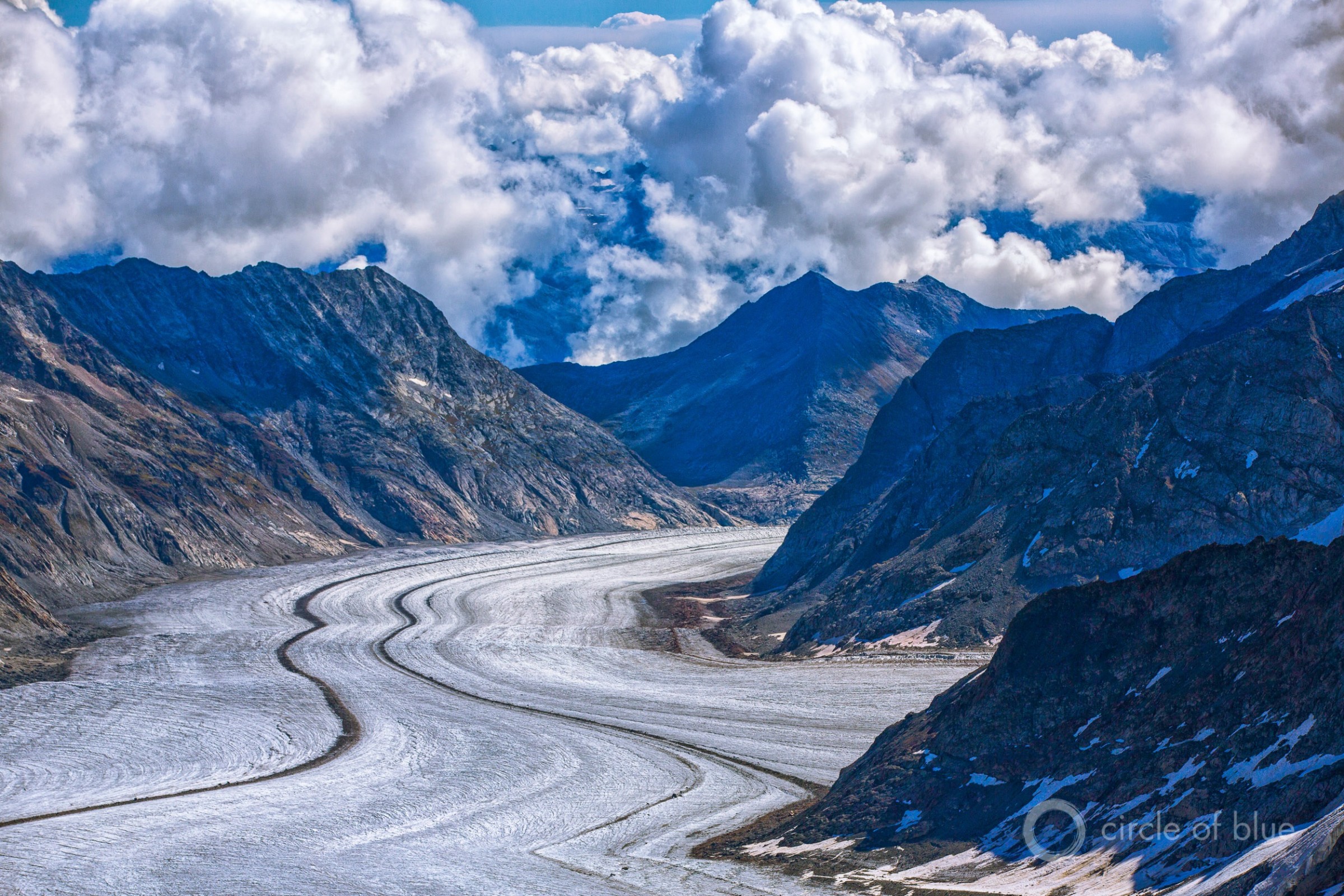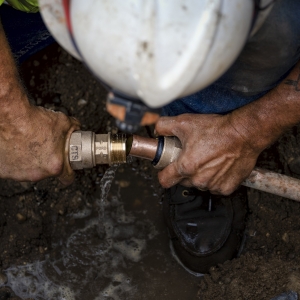The Stream, July 19, 2023: As Heat Waves Continue, EU Advisory Group Proposes ‘Blue Deal’ for Sustainable Water Policies

Glaciers in the Swiss Alps are a key source of water for rivers like the Rhine. Photo © J. Carl Ganter/Circle of Blue
YOUR GLOBAL RUNDOWN
- Amidst torrential and deadly downpours, water overtopped a dam in central South Korea.
- In a third consecutive drought year, 30 of Afghanistan’s 34 provinces are facing “extremely low water quality.”
- The European Union’s European Economic and Social Committee has adopted six opinions for sustainable water policy, to be presented in October.
- The Green Climate Fund, the world’s largest climate fund, has pledged its biggest-ever water investment, an attempt in South Africa to ‘spur private investment in water.’
Communities in Florida are bracing for an influx of contaminated water from Lake Okeechobee, whose algal bloom extent is climbing as the rainy season begins.
“We’re looking at a bullet in the chamber here.” — Eve Samples, executive director of the conservation group Friends of the Everglades.
Water levels at Lake Okeechobee are “two feet higher than the United States Army Corps of Engineers would like,” the New York Times reports, causing South Florida communities to brace for an influx of toxic water in the coming weeks as the state’s rainy season picks up.
Inflows to the lake collect phosphorus and manure from cities, pastures, and croplands, all contributing to Okeechobee’s poor water quality and toxic algal blooms. As water levels rise – exacerbated so far this summer with periods of intense rains, and more precipitation to come — the Army Corps releases water toward coastal cities including Fort Myers, Miami, and Stewart via dikes, canals, and rivers. Lung infections, organ damage, and “gastrointestinal distress” are among the health concerns which result from exposure to toxic water.
Over the winter, the Army Corps set in motion plans to construct a 37-foot-high wall downstream from Lake Okeechobee, in order to protect sugarcane growing lands from its water. The reservoir — which will be the size of Manhattan — is estimated to take a decade to build, and skepticism that it will solve — rather than divert — the problem is abundant.
— Christian Thorsberg, Interim Stream Editor
Recent WaterNews from Circle of Blue
- Perspective | Latest Mekong Dam Will Produce Little Power But Much Environmental Harm — Dam critics urge national governments to halt project on important Mekong tributary.
- HOTSPOTS H20: Drought Restrictions Hamper Big Ships Crossing Panama Canal — A deep drought is making the Panama Canal too shallow for its largest container ships.
The Lead
At its July plenary, the European Economic and Social Committee (EESC), a consultative body of the European Union, adopted six opinions on water which together comprise the “first wave… for a comprehensive water policy for Europe under its Blue Deal initiative.”
The EESC’s Blue Deal proposal includes reducing water consumption, promoting reuse and recycling, and addressing water pollution for all member states moving forward — “embedding water in all EU industrial policies” in an effort to eradicate water poverty.
The six opinions will be discussed on October 26 at the “Call for an EU Blue Deal” conference.
This Week’s Top Water Stories, Told In Numbers
14
The number of hours residents in Kabul queue each day for water, The National News reports. Afghanistan, under Taliban control since 2021, is in its third consecutive year of drought. Temperatures this summer are routinely exceeding 90 degrees Fahrenheit, and 30 of the country’s 34 provinces are reporting “extremely low water quality,” according to the World Food Programme.
22
The number of people who have died in South Korea amidst week-long torrential downpours, which have caused landslides and flooding in the country’s landlocked North Chungcheong province, Reuters reports. Another 14 people were missing as of this weekend, and more than 4,000 were evacuated after water overtopped the province’s dam.
On the Radar
The Green Climate Fund (GCF), established in the 2015 Paris climate agreement “to assist developing countries in adaptation and mitigation practices to counter climate change,” has pledged its largest-ever water investment — $235 million — to South Africa’s state-run Water Reuse Programme, Bloomberg reports.
“The aim is to transform the water sector, with a focus on wastewater, from a predominantly public investment model to a private sector investment model,” a GCF spokesperson said. The GCF funding is meant to be a building block for $1.5 billion in public and private investment. The pledge comes as South Africa — from its largest cities to most rural villages — continues to grapple with water insecurity, hampered by drought and poor infrastructure and management.
More Water News
Hey, Google: The company’s plans to build a water-intensive data center in Uruguay, where a ‘Day Zero’ scenario looms, has sparked outrage among residents, The Guardian reports.
Pack in, Packrafts: Adventure and eco-tourism in southern France has fluctuated in line with unpredictable periods of drought and rainfall, AP reports.
Christian Thorsberg is an environmental writer from Chicago. He is passionate about climate and cultural phenomena that often appear slow or invisible, and he examines these themes in his journalism, poetry, and fiction.






Leave a Reply
Want to join the discussion?Feel free to contribute!